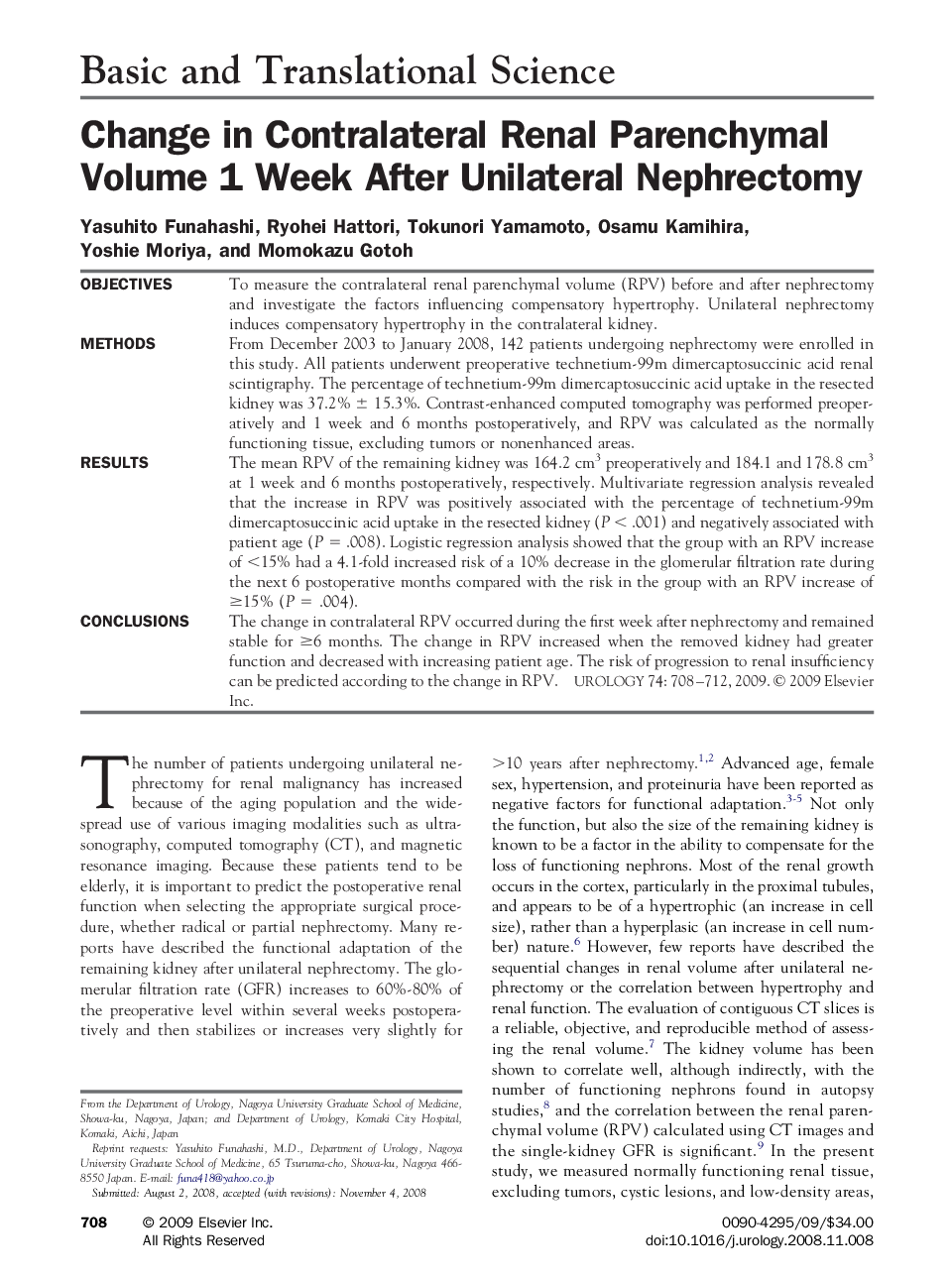| Article ID | Journal | Published Year | Pages | File Type |
|---|---|---|---|---|
| 3904100 | Urology | 2009 | 5 Pages |
ObjectivesTo measure the contralateral renal parenchymal volume (RPV) before and after nephrectomy and investigate the factors influencing compensatory hypertrophy. Unilateral nephrectomy induces compensatory hypertrophy in the contralateral kidney.MethodsFrom December 2003 to January 2008, 142 patients undergoing nephrectomy were enrolled in this study. All patients underwent preoperative technetium-99m dimercaptosuccinic acid renal scintigraphy. The percentage of technetium-99m dimercaptosuccinic acid uptake in the resected kidney was 37.2% ± 15.3%. Contrast-enhanced computed tomography was performed preoperatively and 1 week and 6 months postoperatively, and RPV was calculated as the normally functioning tissue, excluding tumors or nonenhanced areas.ResultsThe mean RPV of the remaining kidney was 164.2 cm3 preoperatively and 184.1 and 178.8 cm3 at 1 week and 6 months postoperatively, respectively. Multivariate regression analysis revealed that the increase in RPV was positively associated with the percentage of technetium-99m dimercaptosuccinic acid uptake in the resected kidney (P < .001) and negatively associated with patient age (P = .008). Logistic regression analysis showed that the group with an RPV increase of <15% had a 4.1-fold increased risk of a 10% decrease in the glomerular filtration rate during the next 6 postoperative months compared with the risk in the group with an RPV increase of ≥15% (P = .004).ConclusionsThe change in contralateral RPV occurred during the first week after nephrectomy and remained stable for ≥6 months. The change in RPV increased when the removed kidney had greater function and decreased with increasing patient age. The risk of progression to renal insufficiency can be predicted according to the change in RPV.
